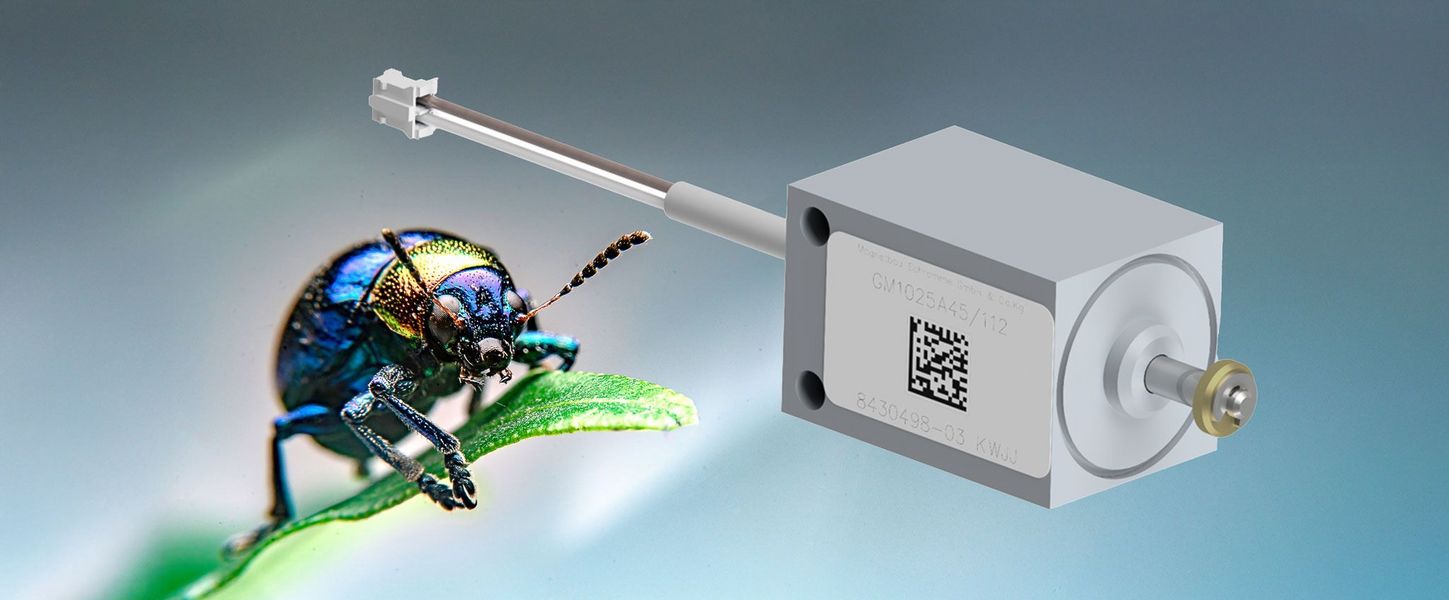How can high-performance solenoids be made increasingly smaller, more efficient, and smarter?
New miniaturization technologies open up opportunities for applications that until now have faced physical limitations.

Electromagnet Miniaturization in High-Tech Industries


Alexander Grischin
Sales Manager
Quicklinks
- Solenoid key technologies for the next generation of electromagnetic actuators
- Why Solenoid Miniaturization is more than just Space Optimization
- Functional Solenoid integration through Mechatronic System Solutions
- Custom Solenoid Development with High Manufacturing Depth
- Micro Miniature Solenoids in the Automotive Industry
- Conclusion
- Frequently asked questions around the miniaturization of electromagnets
Solenoid key technologies for the next generation of electromagnetic actuators
The demands on modern electromagnets are continuously increasing, particularly in forward-looking sectors such as e-mobility, medical technology, and hydrogen applications. Compact designs, higher power density, integrated sensors, and growing environmental requirements call for innovative solutions in electromagnetic actuation.
Why Solenoid Miniaturization is more than just Space Optimization
Miniaturized solenoids today deliver significantly more performance than their predecessors, while featuring smaller volume and reduced weight. This development is not only relevant from a space-saving perspective. In electrified vehicle architectures, for example, smaller proportional solenoids, linear solenoids, and holding magnets enable improved integration into centralized or decentralized control systems, while simultaneously reducing wiring complexity and minimizing energy losses.
In medical technology as well, every millimetre counts. For this reason, Magnetbau Schramme specifically develops miniature linear solenoids for pump and valve systems in portable devices. Always taking into account thermal and dynamic requirements as well as strict standards for biocompatibility and patient safety.
Functional Solenoid integration through Mechatronic System Solutions
A key trend in recent years is the integration of multiple functions into a single module. Electromagnets from Magnetbau Schramme can be combined with:
- Integrated position measurement (sensors)
- Proportional control
- Customer-specific connector geometries
This form of functional integration not only allows OEMs to reduce cost but also simplifies assembly and reduces wiring effort, providing critical advantages in highly automated production environments.
Custom Solenoid Development with High Manufacturing Depth
The success of innovative solutions does not rely solely on standard components, but on a deep understanding of the specific application and a development partner capable of responding flexibly to new challenges. Magnetbau Schramme develops customized proportional solenoids, linear solenoids, and holding solenoids, ranging from compact proportional solenoids and miniature linear solenoids for precise valve technology to complete mechatronic assemblies.
A key strength lies in the high level of in-house manufacturing: tool design, CNC machining, coil production, and electronics development are seamlessly integrated. This enables rapid prototyping and reliable series production – whether for the automotive sector, hydrogen technology, or industrial automation.
Micro Miniature Solenoids in the Automotive Industry

The automotive sector is currently undergoing a massive transformation. Increasingly, electrical, autonomous, and connected functions are being integrated into modern vehicles. Legal requirements (e.g., for active safety and emissions) as well as rising customer expectations in areas such as infotainment and comfort are leading to a sharp increase in the number of control units and actuators inside vehicles while the available installation space remains almost unchanged. Miniaturization has therefore become a prerequisite for future vehicle generations to accommodate the growing functionality within limited space.
In a modern mid-size passenger car, dozens (sometimes over 100) electromagnets are already installed.They are integrated in fuel injection valves, electromagnetic brakes, and valve control systems, among others. These actuators directly affect fuel consumption, performance, safety, and environmental compatibility of the vehicle. With growing electrification, e.g., in electric and hydrogen-powered vehicles, electromagnetic actuators are increasingly replacing mechanical or hydraulic systems. Examples include brake-by-wire systems with magnetic valves in ABS/ESP modules, electronic throttle valves and valve trains in engines, or door locks and seat adjustment systems in the comfort domain. By using miniaturized magnetic actuators, such systems can be made more compact and often more energy-efficient, which is especially important for extending the range of electric vehicles. Moreover, the compact design allows decentralized placement closer to the point of action (e.g., directly at a valve or wheel), reducing cable length and weight.
Another key trend is the intelligence and connectivity of these miniature magnets. Their functional properties are increasingly enhanced by integrated control electronics and networking via vehicle bus systems. Miniaturized electromagnets are now often part of complex mechatronic units that communicate directly with the vehicle’s central electronics. Integrated sensors monitor position or temperature of the actuator in real time, while digital control enables dynamic adjustment and self-diagnostics. The electromagnet is evolving from a simple switching element into an intelligent actuator, seamlessly integrated into the overall vehicle system.
Given these developments, the following design goals for electromagnetic actuators are coming to the forefront in the automotive industry:
- Minimal installation space and parts count: Each component must be as small and lightweight as possible to save space and weight.
- Maximum dynamics: Advanced magnetic materials and control concepts enable ever faster switching and response times, close to physical limits.
- High energy efficiency: Optimized windings and reduced losses (e.g., fewer eddy currents) lower power dissipation, allowing actuators to operate with minimal electrical energy.
- Durability and reliability: Miniaturized actuators are designed to withstand millions of switching cycles as well as extreme temperatures and vibrations over the vehicle’s lifetime. Robust materials, corrosion protection, and automotive-standard testing (e.g., –40 °C to +150 °C) ensure long-term performance.
- Cost efficiency: Despite high-tech designs, actuators must remain economically manufacturable in large volumes. Simplified designs and high level of in-house manufacturing depth help to reduce unit costs.
To achieve these goals, the latest generation of automotive actuators relies on several key technologies. New magnetic materials and alloys with higher permeability and saturation flux density allow small cores to generate strong magnetic fields. At the same time, advanced coil technologies (from precise winding methods to innovative flat-wire or foil windings) make it possible to pack more copper into the smallest possible space. Integrated electronics enable PWM-based proportional control, soft-start functions, and current reduction during holding phases, which lowers heat generation. In addition, modern simulation and design tools have significantly improved actuator development. Engineers can virtually optimize the dynamic behavior of new magnet drives, such as minimizing switching times or avoiding overshoot before building prototypes.
Finally, electromagnetic components for automotive applications must comply with strict quality and safety standards. These include certifications like IATF 16949 for quality management and comprehensive testing for electromagnetic compatibility (EMC) as well as shock and vibration resistance. A development partner with automotive expertise ensures that miniaturized electromagnets meet these requirements and can be seamlessly integrated into vehicle architectures.
Conclusion
The combination of miniaturization and functional integration is fundamentally changing the role of electromagnetic actuators. They are no longer mere switching components, but an integral part of intelligent systems. Magnetbau Schramme positions itself here as a development and industrialisation partner with decades of experience and high innovative capability.
Frequently asked questions around the miniaturization of electromagnets
How small can electromagnets be?
Miniaturized solenoids can now be reduced to just a few millimetres without significant loss of performance. Key factors include winding technology, high-quality core materials, efficient thermal management, and precise electronic control. This combination allows compact linear and proportional solenoids to deliver high forces and fast response times, even in space-critical applications such as medical technology, e-mobility, or industrial automation, opening entirely new design possibilities.
How powerful can a small electromagnet be?
Miniaturized proportional solenoids typically generate forces of 2–10 N at just a few millimetres in height, sufficient for precise valve control. Small linear solenoids can reach 10–50 N, directly actuating valves or mechanisms, while compact holding solenoids provide 20–100 N of holding force, for example in latching or positioning tasks. Even at millimetre scale, these solenoids can be optimized for specific force ranges, ensuring reliable operation in mobile, industrial, or medical applications.
How to degauss an electromagnet?
Industrial degaussing is achieved by gradually reducing an alternating current field, often using specialized degaussing devices or coils. This ensures complete residual field elimination.
How to increase the strength of an electromagnet?
The magnetic force of an electromagnet can be increased through higher current densities, optimized winding numbers, and precise winding patterns. High-permeability core materials and narrow air gaps enhance the magnetic flux, while efficient cooling allows higher currents without overheating. This combination enables even compact proportional, linear, or holding solenoids to generate significant forces and achieve very high-power densities.
How can electromagnets affect sensitive electronics and how can this be prevented?
Strong industrial electromagnets can damage sensitive electronics through direct magnetic fields or induced currents, particularly memory chips, sensors, or circuit boards. Protection is achieved through sufficient spacing, careful placement, or shielding. Materials such as soft iron or high-permeability alloys (e.g., Mu-metal) redirect and weaken magnetic fields, safeguarding components. With precise design and shielding, magnetic fields can be efficiently controlled without impairing the function of nearby devices.